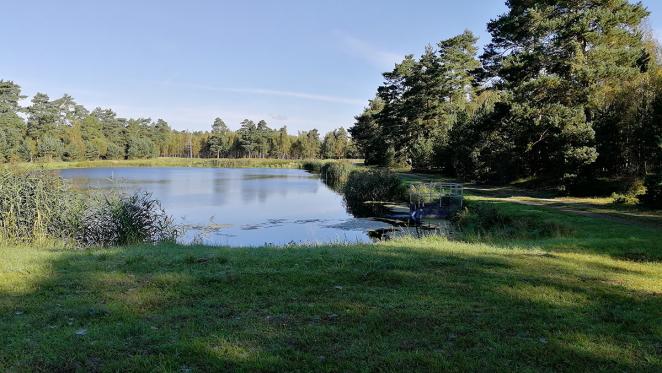The water of the North Sea region is not only affected by climate change, but also by people’s use of water and land in the surroundings. In order to have continued future access to clean water – and a sufficient supply – measures need to be taken immediately. This is shown by the EU project, Blue Transition, in which Lund University participates and contributes to strategies for the future through research on Vombsjön and Bolmen – lakes that are crucial for the future supply of water in Skåne.
Focus on Vombsjön and Bolmen
The research at Lund University focuses on Vombsjön and Bolmen, lakes that are pilot areas in the project. Tina Martin, researcher in Engineering Geology at the Faculty of Engineering (LTH) and project manager of Lund University’s area of responsibility within Blue Transition, explains why the lakes are important:
“Increasingly frequent extreme weather, combined with a growing population and expanding industrial and agricultural activities, make it particularly urgent to secure access to clean water from Vombsjön and Bolmen. The lakes are crucial for ensuring the supply of drinking water in Skåne.”

The Vomb basin is an important groundwater reservoir in southern Sweden. “If we take more and more water from the Vomb basin at the same time as the climate is changing, the sensitive ecosystem and biological diversity in the area will be impacted, Tina Martin says. Photo: Tina Martin
The lakes’ issues differ
Bolmen contends with brownification, which means that the lake water gets a brown colouration from iron and organic material. An increasingly brown lake causes changes in the ecosystem and can impair the drinking water.
The Vomb basin is an important groundwater reservoir in southern Sweden. The basin’s younger rock layers consist of a porous sandy limestone, which together with almost 80 metres of quaternary deposits makes it one of the largest aquifers in southern Sweden, explains Tina Martin.
“If we take more and more water from the Vomb basin at the same time as the climate is changing, the sensitive ecosystem and biological diversity in the area will be impacted. It is therefore very important that the method for collecting water is improved, so that the surrounding environment is affected as little as possible,” she says.
The Vomb basin also includes Storkriket, which consists of the protected natural areas Klingavälsån and Vombs Ängar.
“Work is being conducted to make Storkriket a biosphere reserve within UNESCO, so that the area can be used to develop new methods for water management – and be better protected,” says Tina Martin.
International consensus for future water management
Research at Bolmen and Vombsjön has been going on for several years, but coordination of the research within Blue Transition is something new since the project started last year. One of the goals of the project is an international consensus with knowledge that is to be of direct use for public authorities, industry, agriculture and society in general.
The research area in Southern Sweden is one of 16 pilot areas in the study. The others are in Belgium, Denmark, France, the Netherlands and Germany. The areas are studied using ground surveys of various types and through the analysis of the land’s underground structures using drone technology. The aim is to establish common processes for the use of ground water and the management of wetlands, peatlands, nature reserves, forests, and agricultural and urban areas.
“Coordination is important to protect the natural habitats, help to reduce carbon dioxide emissions and ensure that we have access to clean water in the future,” says Tina Martin.
